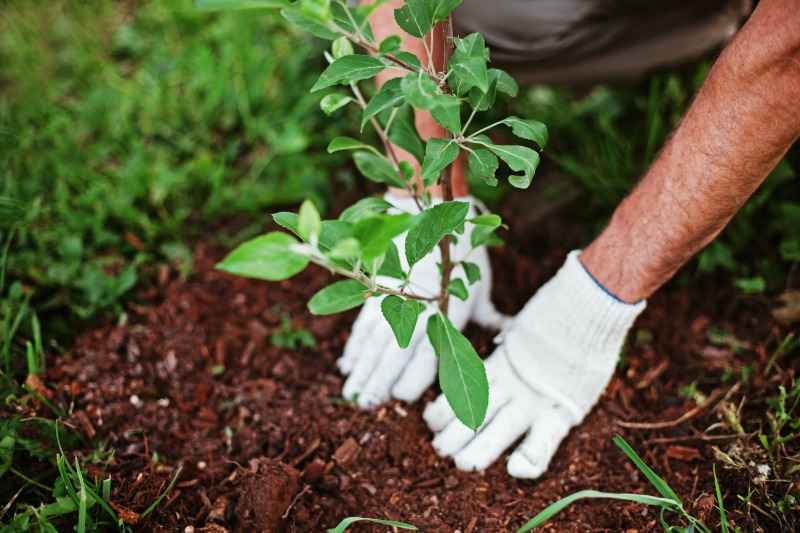Spring is a great time of the year to plan and install a yard and garden design, especially after you have been staring at a grayscale winter landscape for months. Historically, spring is when planting was done because plants could be transplanted while they were still dormant. Now, spring is no longer the only planting season. Crops can be grown in containers, extending their seasons and increasing their availability.
However, spring is still a good time to get started. You can take advantage of the spring rains to do your watering, and the moist earth is easier to work with! The sun is also not as intense as in summer, so new plants won’t be scorched. Starting early in spring is the key to getting the choice pick of plants from nurseries. Stores can quickly run out of stock, especially unusual plants, during the start of the warmer summer months.
Here are our top spring planting tips to help you get started:
1) DON’T plant when the ground is so wet that it is muddy—the soil will be ruined and your plants won’t be happy. Wait until you cannot make mud balls out of it. However, if your shovel will not go into the ground, it is not wet enough.
2) While planting, use the same soil to fill around your plants that you dug up to make the hole, unless you have particularly bad soil. Different types of soil will not necessarily play well together. Light loam in a hole surrounded by clay will suffocate the plant. The worse the soil, the larger the hole needs to be. If you are planting a new large space, it is better to supplement the whole area from the start, particularly in a new home build landscape. Do it right the first time and your landscaping investment will pay off because your soil will be healthier.
3) Fertilize the soil with a generic balanced 14-14-14 before you plant, tossing some in the hole. Do not use Triple 12—this fertilizer is fast acting and hot, absorbing all the water so the plants cook. Triple 14 is a slow releasing fertilizer that will not kill your plants in the process.
4) Water everything right after you plant it. Water settles the soil and removes air pockets. New plants need ½’’ to 1’’ of water every week or two, though it depends on the species and your soil. Watering in spring can be tricky because of the rain—factor that in and don’t water if you don’t have to. Try to keep plants on the dry side of moist. If your root ball feels like a marble, you have waited too long.
5) Think of your plants as people, and you will have an easier time knowing how to care for them. Is it hot and windy out? Your plants will need more water, just like a person would. Is it cold and rainy? Insulate your plants and don’t water them.
These rules are true for any living thing, trees, shrubs, perennials or annuals. Know what your plants need and place them in the correct areas. Do not plant too deep, or too shallow. Make it just right. Use the winter months to plan your garden, shop early for the best selection of specialty plants, and resist the urge to play in the mud!
Overall planning is paramount—a good foundation will last you a long time. Your landscape is an investment, not just an expenditure. If done properly, you will gain the value of an enhanced home. If done improperly, the faulty job becomes a liability and will cost you more.
Have questions? Let’s talk! Call us at (317) 997-4803, or send us an email.






